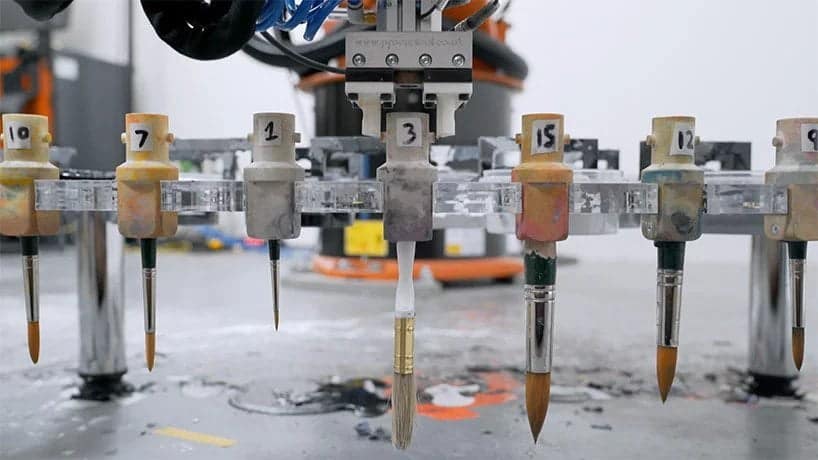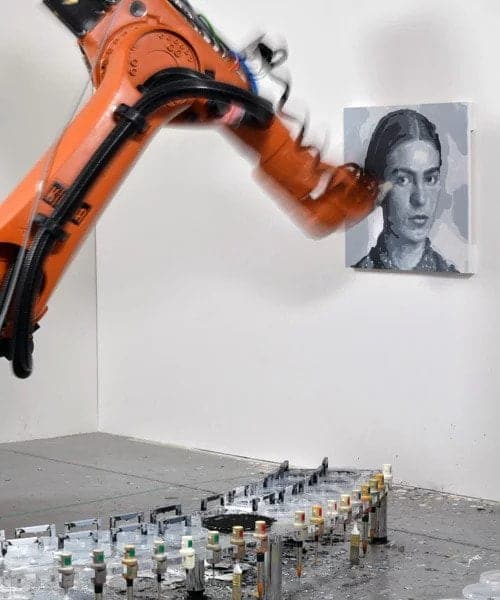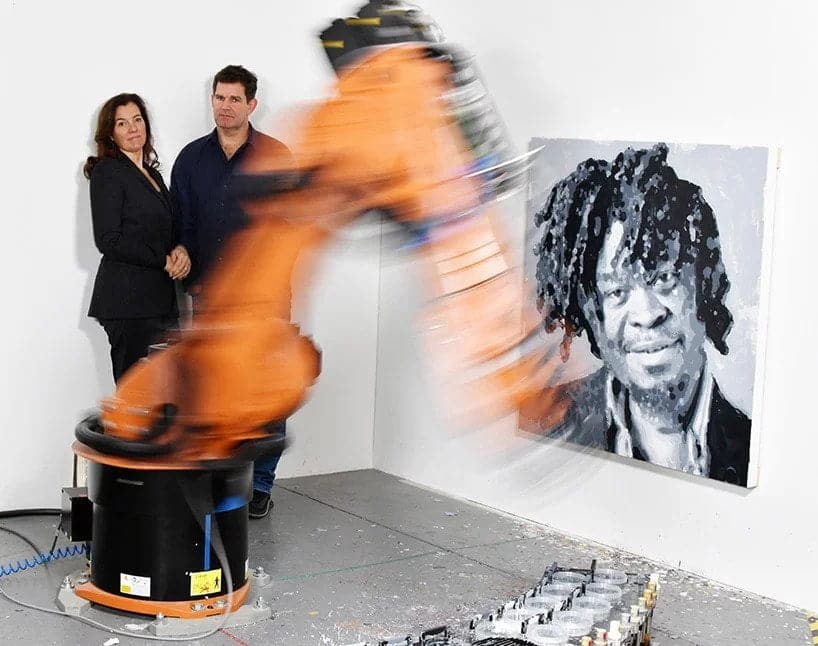The artistic duo Nick and Rob Carter (husband and wife) is grappling with the technologies of the digital age in one of his most advanced projects ever created.
Present at the London gallery Ben Brown Fine Arts until 17 April 2020, the project “Dark Factory Portraits” (which I would translate with license to “dark industrial portraits”) poses intriguing questions. For example: Can a robot take robotic but “human” portraits? Can he become a painter? Can, in other words, transmit human personality onto canvas?

How robotic portraits are born
Together with a team of software programmers and visual effects specialists, the Carters began to explore how much algorithms and robotic parts could progress towards a new creative standard.
The “Dark Factory Portraits” take their name from the “lights out productions”, the factories that work even in the dark. Why? Because robotic systems don't need to "see" what they are doing.
This is how the two artists want to draw viewers' attention to the world of future work through robotic portraits. According to Deloitte, on the other hand, it is likely that 35% of the world's jobs it will be fully automated by 2035.
The Carters worked with programmers to optimize the code so that the robot could paint both freely and with a very high level of detail. The resulting portraits (of famous artists such as Frida Kahlo, Andy Warhol, Yoko Ono, and Damien Hirst) are among the first cultural artifacts of a nascent era.
The arm? It's called Kuka
Visitors to the exhibition will also be able to see the famous Kuka robotic arm in action while painting independently, without any human guidance.
So what will robotic portraits do? Will they receive applause and congratulations for their artistic sensitivity? Why do you whistle represent a job that will be stolen?





